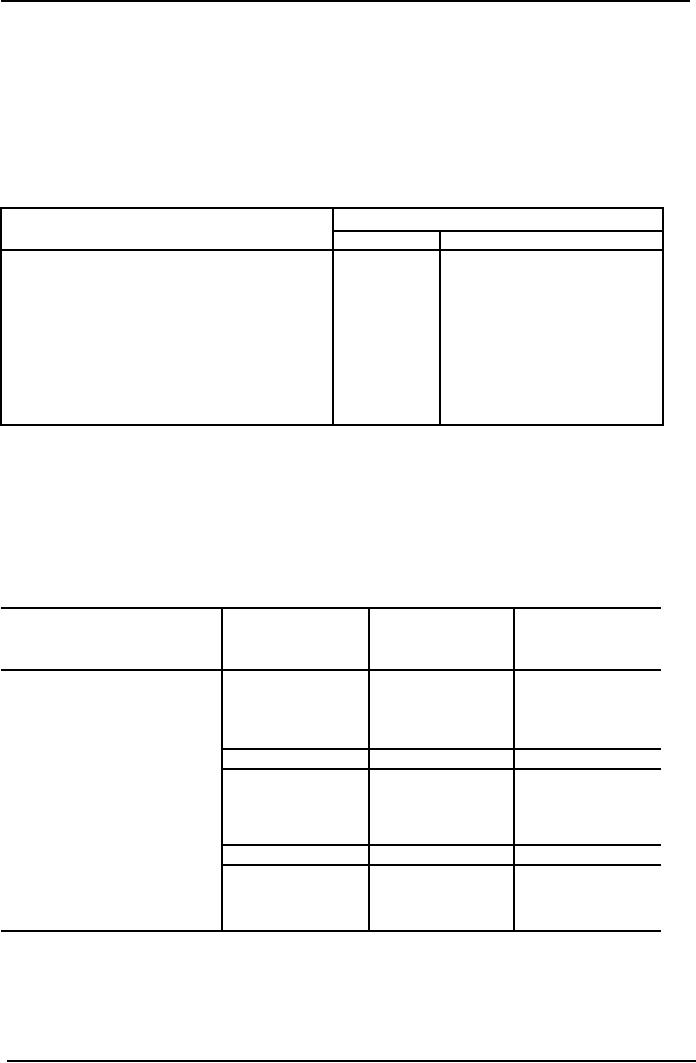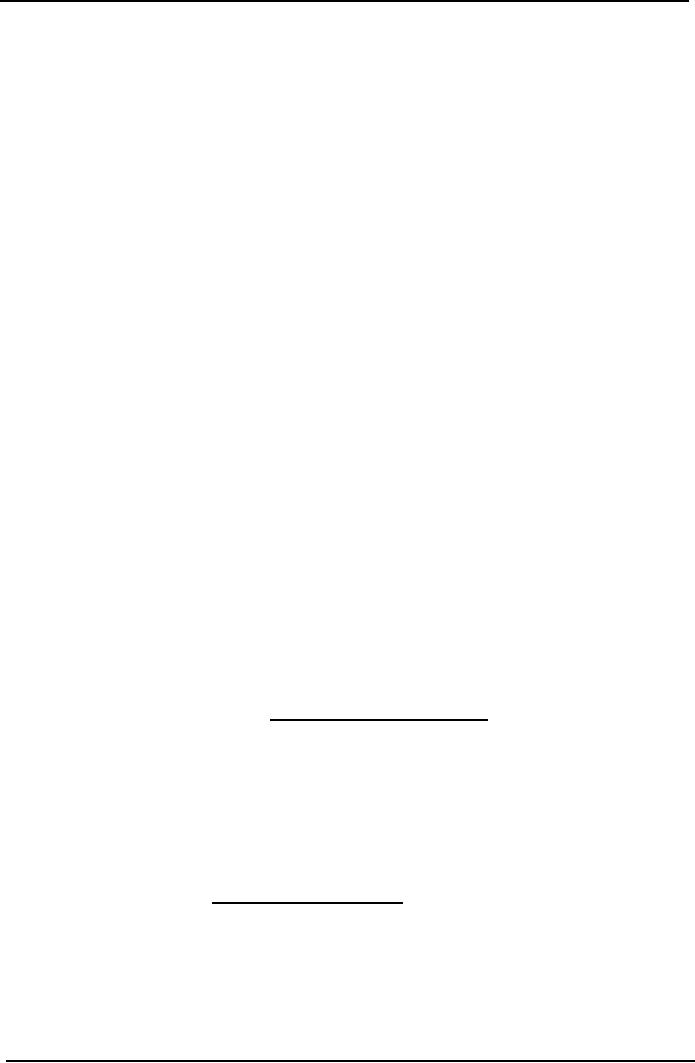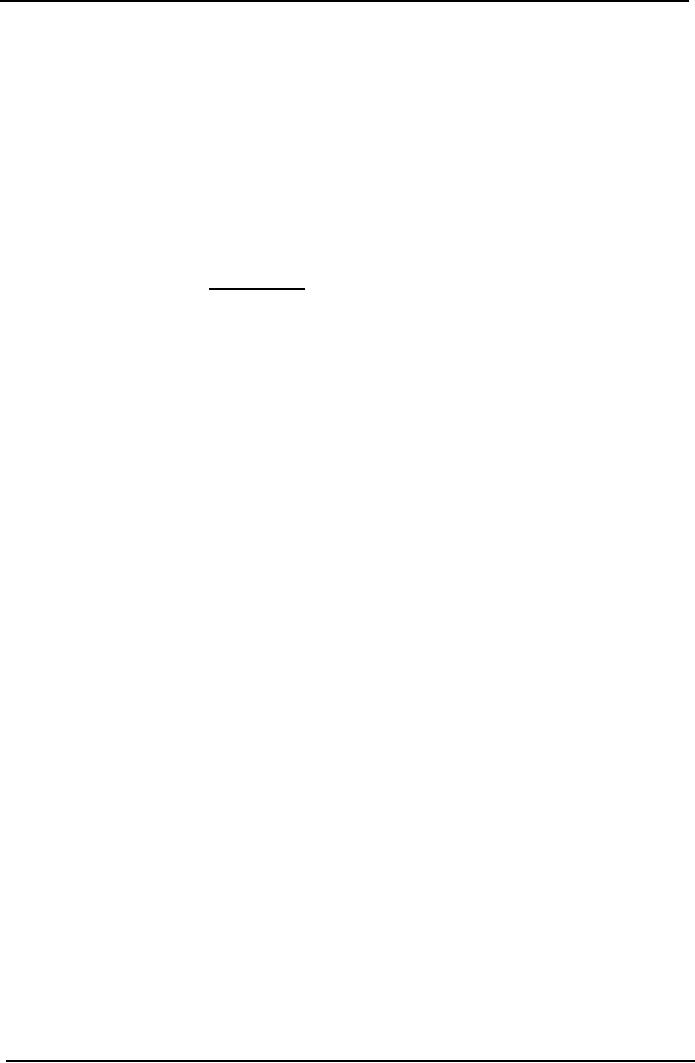 |

Cost
& Management Accounting
(MGT-402)
VU
LESSON#
17
FACTORY
OVERHEAD COST
Overhead
Absorption Rate
After
preparing estimates of factory overhead
for production departments, the
next step is to
select
a
factory overhead absorption
base for each production
department. The base to be
selected for
this
purpose should be the principal
cost deriver of factory overhead of
the department.
Cost
Driver is defined as a measure of
activity the magnitude of which
influences if magnitude of
cost
of relevant cost objectives. In other
words Factory overhead application
base should be a
measure
of activity which has causal
relation with incurrence of
factory overhead.
The
most simple and direct
measure of activity of a manufacturing
concern is number of
units
produced.
It can be safely regarded as
the best cost driver
for the purpose of factory
overhead
absorption
in such situations where there is a mass
production of homogeneous units (i.e.
process
costing
industries) or where a few products are
produced in batches (i.e. batch costing
industries).
In
process costing industries like sugar, cement
etc. Kg. or a bag may be
regarded as unit of
output;
a
bottler may use a bottle or
a liter as a unit of output. In
bate costing industries the activity
is
measured
"in equivalent number of
units produced.
For
example, a chip-board factory
produces three grades of chip board
say A, B, and C and a
square
foot is used as the unit to
measure out put. Technical
estimates reveal that
factory overhead
cost
of one square foot of grade B
and grade C is respectively one-half
and one-fourth of grade
A.
In
other words proportion of
factory overhead cost of one
square foot of chip board among
the
three
grades is 4:2:1. Consequently,
for the purpose of factory
overhead absorption one
square
foot
of grade A, B, and C shall be regarded as
equivalent to 4 Sq, Ft. 2
Sq, Ft. and 1 Sq.
Ft.
respectively.
On
the other hand in job
costing industries each unit of output is
quite different from the
other.
For
example, a furniture manufacturer
produces chairs (study
chairs, office chairs, easy
chairs,
dining
chairs), tables. (study
tables. office tables,
dining tables, dressing
tables), beds (doubly
beds.
single
beds) and many other
items, each according to
specifications of customers. In such a
situation
because of the dissimilarities, a
unit of output can neither
be used to measure the
activity
nor
as base for factory overhead
absorption. Therefore, some
other common denominator
should
be
adopted to measure the
activity and as base for
applying factory overhead to the
products. Basis
generally
selected for this purpose
are listed below in descending
order of frequency of
use:
1.
Direct labor cost;
2.
Direct labor hours;
3.
Machine hours;
4.
Direct materials
cost;
5.
Prime cost.
No
hard and fast rule regarding
selection of the absorption
base can be prescribed.
However, two
guiding
principles in this respect are:
(i) the selected base
should give accurate results,
and (ii) cost
of
operating the base should
not be greater than the
benefit derived from
accuracy.
Many
times we find that factory
overhead cost fluctuates
with time spent on the
products or Jobs,
therefore,
direct labor hours and machine
hours are more suitable
cost derivers. But use of
direct
labor
hours or machine hours as factory
overhead absorption base
requires additional cost
and
clerical
efforts to collect data of
time spent on each job,
Consequently, for the sake
of
convenience,
management may decide to adopt direct
labor cost as base for
applying factory
overhead,
provided that it also gives
approximately correct results. Use of
direct materials cost as
factory
overhead absorption base is
rarely recommended because prices of
materials are subject to
violent
fluctuation as well as direct materials
cost seldom represents a
cost driver of
factory
overhead.
Same is the case with
prime cost as a base for
factory overhead
absorption.
115

Cost
& Management Accounting
(MGT-402)
VU
PRACTICE
QUESTION
Units
of output as the Absorption
Base.
Babul
Bottlers produces "Bubble
Drink" which is filled in
bottles of three sizes i.e.
25 ml. 1 liter
and
5 liters. The firm assigns
factory overhead cost to its
products by using a predetermined
factory
overhead absorption rate
calculated on the basis of
units of output. Technical
studies reveal
that
proportion of factory overhead
incurred on one bottle of each
size mentioned above is
1:2:4
respectively.
Estimated production during the
coming year is as
follow:
Bottle
Size
Production
250
ml.
80,000
bottles
1
liter
70,000
bottles
5
liter
20,000
bottles
Estimated
factory overhead cost for
the coming year is Rs
360.000
Required:
Calculate predetermined factory overhead
rate for each size of
bottle.
Solution:
Bottle
Estimated
Points
Estimated
Estimated
Estimated Predetermine
Size
output
Assigned
Total
FOH
Per
FOH
for FOH rate
per
Bottles
Points
Point
Each
Size
Bottle
Rs.
Rs
Rs.
250
ml.
80,000
1
80,000
1.20
96,000
1.20
1
liter
70,000
2
140,000
1.20
168,000
2.40
5
liter
20,000
4
80,000
1.20
96,000
4.80
300,000
360,000
Notes:
Estimated
FOH per point= Total
FOH/Total point = Rs.
360.000/300.000 point
Estimated
FOH for each size
Predetermined FOH rate per
bottle=Rs. 1.20 = Estimated FOH
per
point
or Estimated points of each size =
Estimated FOH for each size/Estimated
output of each
size
Q.
2
Following
figures are presented to you by
Alfa Manufacturing
Company.
Items
Budgeted
Figures for
Actual
Figures for operations
operations
During 2006
during
January 2006
Dept
A
Dept
B
Dept
A
Dept
B
Direct
materials (Rs )
Direct
6,000,000
2,400,000
50,000
250,000
labor
(Rs.)
1,500,000
1,200,000
145,000
105,000
Factory
overhead (Rs.)
1,200,000
1,800,000
14,000
9,500
Direct
labor hours
150,000
100,000
26,000
28,000
Machine
hours
300,000
360,000
Required:
116

Cost
& Management Accounting
(MGT-402)
VU
(i)
Calculate predetermined factory overhead
absorption rates for the
departments using five
different
bases. (Present your answer
by enlisting the rates in
descending order of approximate
frequency
of their use).
(ii)
Calculate total product cost
of output during January
2006 under all of the
three bases,
Solution:
(i)
Predetermined
Factory Overhead Absorption
Rates:
Predetermined
FOH Absorption Rates
FOH
Absorption Bases
Department
Department B
(1)
Direct labor cost
base
80%
150%
(2)
Direct labor hours
base
Rs.8
Rs
18
(3)
Machine hours base
Rs.4
Rs.
5
(4)
Direct materials cost
base
20%
75%
(5)
Prime cost base
16%
50%
NOTE:
FOH
absorption rate =
Estimated
FOH for the year x 100
(if base is in Rs)
Estimated
base for the
year
Total
Product Cost for January
2006
(1)
(2)
(3)
Particulars
Direct
Labor
Direct
Labor
Machine
Hours
Cost
Base
Hours
Base
Base
Department
A Direct
Rs.
450,000
Rs.
450,000
Rs.
450,000
materials
Direct
labor
145,000
145,000
145,000
Factory
overhead applied
116,000
112,000
104,000
Total
Department B: Direct
711,000
707,000
699,000
250,000
250,000
250,000
materials
Direct
Labor
105,000
105,000
105,000
Factory
overhead applied
157,500
171,000
140,000
Total
512,500
526,000
495,000
1,223,500
1,233,000
Total
product
cost
NOTES:
Factory
Overhead Applied:
Department
A:
(1)
Rs 145,000 x 80%
=
Rs. 116,000
117

Cost
& Management Accounting
(MGT-402)
VU
(2)
14,000 hours x Rs 8
=
Rs. 112,000
(3)
26,000 hours x Rs. 4
=
Rs, 104,000
Department
B:
(1)
Rs, 105.000 x 150%= Rs,
157,500
(2)
9.500 hours x Rs. 18
=
Rs. 171,000
(3)
28,000 hours x Rs. 5
=
Rs. 140,000
Selection
of Capacity Level
Capacity
Level means ability to produce.
The term is synonymous as
Activity Level or
Volume.
Industries
producing homogeneous units may
express their capacity level
in terms of units of
output,
whereas, Job costing industries may
measure it in terms of direct labor cost,
direct labor
hours,
machine hours etc.
For
the purpose of calculating predetermined factor
overhead absorption rate it is
necessary to
select
an appropriate capacity level at which
the cost and the
cost driver should be
estimated.
In
cost accounting literature we
find reference to following
types of capacity
levels.
Theoretical
Capacity
It
is the maximum capacity
level that could be achieved
if there
were
100% utilization of time.
This capacity level can
never be achieved because of
unavoidable
interruptions
e.g. Fridays, holidays, repair
and maintenance, machine breakdown,
electricity
breakdown,
shortage of materials, lack of
demand etc. Theoretical
capacity is the starting
point for
measurement
of practical capacity.
Practical
Capacity It is
the maximum capacity level
that can he attained under
efficient
working
conditions. When loss of
time due to unavoidable interruptions as
mentioned above, is
deducted
from theoretical capacity the remainder
is practical capacity.
Expected/Normal
Capacity
It
is the capacity level
expected to be attained during
the
accounting,
year. Expected/normal capacity is
dependent of market demand for the
products. It
may
be equal to or less than the
practical capacity.
Most
of the experts make a slight
difference between expected
and normal capacity. They
are of
the
opinion that normal capacity
is the average of expected
capacity over a number of
years. This
average
is used to smooth the
seasonal, cyclical and trend variations
over the years.
Selection
of an appropriate capacity level is
necessary because:
(1)
Fixed
factory overhead absorption
rate is inversely related
with capacity level i.e.
the fixed
rate
is higher at a lower capacity
level and it is lower at a
higher capacity
level,
(2)
Amount
of unabsorbed fixed factory
overhead at the end of an
accounting period is used
to
denote cost of failing to achieve
the target production i.e.
cost of unutilized capacity
(the idle
capacity
variance to be discussed later).
Practical
capacity is seldom selected
for the purpose of budgeting. It is
the expected/normal
capacity
that is used to budget or estimate
the costs. Long term
planning prospective advocates
selection
of normal capacity level.
However, on account of difficulties in
estimating with
reasonable
accuracy beyond one year.
expected actual capacity is
most commonly
adopted.
Following
practice question shows affects of
capacity level on factory
overhead, application rate
and
on the amount of unabsorbed
fixed factory
overhead.
118

Cost
& Management Accounting
(MGT-402)
VU
PRACTICE
QUESTION
At
beginning of the year 2006
Shahbaz & Co. estimated its
fixed factory overhead at
Rs. 350,000
and
variable factory overhead at
Rs. 500,000 for a normal
volume of 125,000 units.
Practical
volume
was estimated at 140,000
units per year. During
2006 the company could
produce only
100,000
units.
Required:
Compute each of the
following on the bases of
(i) Expected volume and (ii)
Practical
volume:
(a)
Predetermined factory overhead
application rate:
(b)
Amount of factory overhead
applied during 2006
and
Solution:
(a)
Predetermined Factory Overhead
Application Rate ;
Estimated
Factory Overhead
Estimated
Capacity Level
(i)
At normal capacity
(Rs.
350,000 Fixed + Rs 500,000 Variable) = Rs
6.80 per unit
125,000
units
(ii)
At practical capacity level
(Rs.
350,000 Fixed + Rs. 500,000 Variable) =
Rs 6.07 per unit
140,000
units
(b)
Factory
Overhead Applied During
2006:
Capacity
attained x Factory overhead application
rate at normal
capacity
(i)
Using the rate at expected
capacity
100.000
units x Rs 6.80 = Rs.
680,000
Blanket
Rate
A
blanket absorption rate is a
single rate of absorption
used throughout an organization's
production
facility and based upon its
total production costs and
activity.
The
use of a single blanket rate
makes the apportionment of
overhead costs unnecessary
since
the
total production costs are
to be used. How ever this is
not recommended for the
following
reasons:
·
It relies on a single activity
measure being appropriate for
the entire production
function.
·
It does not distinguish between
the miming costs of
particular activities or departments
when
absorbing
costs into cost
units.
Accounting
for Factory Overhead Cost
Factory
overhead cost includes indirect
materials cost, indirect
labor cost and other
indirect
manufacturing
costs.
Most
of the factory overhead cost
items are recorded
(identified) straight away as
factory overhead
cost;
these include some sort of
indirect material items, indirect
labor, electricity, insurance,
rent,
repair
etc. etc. Accounting entry
for these costs
is:
Factory
overhead control a/c
xxx
Bank/cash/accounts
payable a/c
xxx
Some
of the factory overhead cost
items are allocation or
transfer of cost from
another accounting
head.
Accounting entry for these
costs is:
Factory
overhead control a/c
xxx
Depreciation
a/c
xxx
Prepaid
rent a/c
xxx
Etc.
.
xxx
Applied
factory overhead is entered in
the work in process account. In
order to journalize
total
applied
factory overhead following
accounting entry is
passed:
119

Cost
& Management Accounting
(MGT-402)
VU
Work
in process control
a/c
xxx
Factory
overhead applied a/c
xxx
The
amounts are then posted to
relevant ledger accounts.
Actual
factory overhead continues to
accumulate on debit side of factory
overhead control
account
throughout the year and
applied factory overhead
cost on credit side of factory
overhead
applied
account. At the end of year
factory overhead applied
account is closed to factory
overhead
control
account by passing following
accounting entry:
Factory
overhead applied a/c
xxx
Factory
overhead control a/c
xxx
Actual
and applied overhead are
never equal. They could be
equal only when estimates of
factory
overhead
cost and the capacity
level prepared for calculating
the absorption rate are
100% correct.
In
practice it is impractical to achieve
this much accuracy. As a
result, after the close of
applied
account,
factory overhead control
account shows either a debit balance
representing under applied
factory
overhead or a credit balance representing
over applied factory
overhead.
Under
applied factory overhead
means that factory overhead
cost charged to production is
less
than
the actual factory overhead
and the cost of production
is understated.
On
the other hand over
applied factory overhead
means that factory overhead
charged to
production
is more than the actual
factory overhead and the
cost of production is
overstated.
This
under or over applied
balance is disposed off by adopting
anyone of the following
four
methods.
1.
Adjusting Cost of Entire
Production of the
Period.
This
is the most accurate method
and gives correct figures
for income determination and
for
balance
sheet. At the end of a year
total production of the year
stands divided into
a)
cost of goods sold,
b)
finished good inventory'
and
c)
work in process
inventory.
An
under or over absorbed
factory overhead means respectively
under or overstated cost
of
goods
sold, finished goods inventory
and work in. process
inventory. Therefore
mathematically
correct method is to adjust all of
these three accounts by
distributing under or
over
applied overhead to these accounts in
the proportion of their
respective balances.
Assume
that at the end of year
factory overhead control
account shows an over
applied
balance
of Rs. 100,000. Balances of
cost of goods sold, finished
goods and work in
process
control
accounts are Rs. 1,600,000
.Rs. 300,000 and Rs.
100,000 respectively. The over
applied
factory
overhead shall be disposed off by
passing following entry in
general journal.
Factory
overhead over-applied a/c
100,000
Cost
of goods sold a/c
80,000
Finished
goods a/c
15,000
Work
in process a/c
5,000
The
above entry closes factory
overhead control account and
reduces the balance of cost
of
goods
sold, finished goods, and
work in process control
accounts by the accounts by
which
these
are overstated. Had the
factory overhead cost under
absorbed, the above entry
would
have
been reversed.
1.
Closing the Variance to
Cost of Goods
Sold.
Posting
of under or over applied
factory overhead to the
subsidiary ledgers of finished
goods
and
work in process control accounts is a
tedious .job requiring much
clerical efforts
especially
in
job-order and batch costing industries,
Therefore, when the amount
of under or over
absorbed
factory' overhead is insignificant.
The cost accountants prefer to
close it only to cost
120

Cost
& Management Accounting
(MGT-402)
VU
of
goods sold. In this case the
entry to be passed in general
journal to dispose off an
over
applied
balance is as follow:
Factory
over head over-applied
a/c
xxx
Cost
of goods sold a/c
xxx
Obviously
the entry to dispose of an
under applied balance shall be
opposite to the above
entry.
This method though
theoretically not very
sound, is justified on the
ground of
convenience.
2.
Closing the Variance to
Income Statement.
Where
factory overhead variance is on
account of some abnormal
factors e.g. idle
capacity
caused
by strikes or lockouts, unlawful
spending, poor utilization of
production facilities,
mismanagement
in production etc. the
amount of variance is closed to
Income
Summary/Profit
and Loss Account. The
above noted factors result
in under absorption of
factory
overhead. The general
journal entry to dispose off
such under applied factory
overhead
is
as follow:
Income
summary/Profit & loss
a/c
xxx
Factory
overhead under-applied a/c
xxx
In
this case, cost of goods
sold at normal is deducted from
the net sales. The
resulting gross
profit
is termed as gross profit at normal.
Then from the gross
profit at normal amount
of
under
absorbed factory overhead is
deducted and the remainder is
called gross profit at
actual.
Alternatively
this amount of under
absorbed factory overhead
may also be deducted from
the
net
profit/income.
PRACTICE
QUESTION
City
Links Limited applies
factory overhead @ 60% of direct
labor cost. During the
year just
completed
following actual costs were
recorded:
Direct
labor cost
Rs.
580,000
Factory
overhead cost Rs.
428,000
At
the end of the year
following balances appear in
some of the control
accounts:
Cost
of goods sold
Rs.
1,750,000
Finished
goods
Rs.
500,000
Work
in process
Rs.
250,000
Required:
a)
Determine under or over
applied factory
overhead.
b)
Pass accounting entry to
close factory overhead
applied account at the end
of year.
c)
Pass accounting entries to
dispose off under or over
applied factory overhead in
following
cases:
i)
The variance is regarded as a
significant amount.
ii)
The variance is regarded as an
insignificant amount.
iii)
The variance is regarded as
cause by poor scheduling of production
and excessive
spending.
Solution:
(a)
Under or Over applied
Factory Overhead:
Actual
factory overhead
Rs.
428,000
Capacity
attained x application rate
Rs.
580,000 x 60%
348,000
Under
applied
80,000
(b)
Entry to Close Factory
Overhead Applied a/c:
Factory
overhead applied a/c
348,000
121

Cost
& Management Accounting
(MGT-402)
VU
Factory
overhead control a/c
348,000
Under
applied Factory overhead a/c
80,000
Factory
overhead control a/c
80,000
(c)
Entries to dispose off under
or over applied Factory
Overhead:
(i)
Cost
of goods sold a/c
56,000
Finished
goods a/c
16,000
Work
in process a/c
8,000
Factory
overhead under applied
a/c
80,000
Rs.
80,000
x
1,750
=Rs.
56,000
2,500
x
500
=Rs.
16,000
x
250
=Rs.
8,000
(ii)
Cost
of goods sold a/c
80,000
Factory
overhead under applied
a/c
80,000
(iii)
Income
summary a/c
80,000
Factory
overhead under applied
a/c
80,000
Factory
overhead variance means the
difference between actual
factory overhead incurred
and
factory
overhead applied during the
year. Under applied factory
overhead is regarded as an
unfavorable
sign because actual factory
overhead cost is greater
than the factory
overhead
absorbed
by the production, On the
other hand. Over applied
factory overhead is considered
as
favorable
sign because actual factory
overhead is less than the
factory overhead absorbed.
This
total
variance is analyzed to determine the
causes. The causes of
variance lie in the
following two
factors:
a)
The variance may be due to
the difference between capacity
level budgeted for
calculating
predetermined
factory overhead absorption
rate and the capacity
level actually attained
till
the
end of year: and
b)
The variance may be due to
the difference between factory
overhead budgeted for
capacity
attained
and the factory overhead
cost actually
incurred
If
the variance is caused by difference in
capacity i.e. the first
factor mentioned above, it is
called
Capacity
Variance or Volume
Variance.
On
the other hand, if the
variance is caused by difference in
budgeted and actual costs.
i.e. the
second
factor mentioned above, it is
called Budget Variance or
Spending
Variance
In
practice the total variance
is composed of both of these
two factors. The total
variance is
decomposed
into capacity variance and
budget variance in order to determine the
magnitude of
variance
caused by each of the two
factors listed above.
Capacity/Volume
Variance
Capacity
variance is on account of presence of
fixed factory overhead.
Predetermined factory
overhead
absorption rate is the sum
of fixed rate and variable
rate. We know that total
fixed
factory
overhead remains unchanged within a
designated range of activity
level and the fixed
rate
122

Cost
& Management Accounting
(MGT-402)
VU
changes
inversely with changes in
activity level Assume that
for an estimated activity
level of
50,000
machine hours budgeted factory
overhead is Rs. 150,000
which includes Rs 100.000 of
fixed
cost. The absorption rate
and its composition in this
case is as follow:
FOH
absorption rate:
Rs,
150,000/ 50.000 machine
hrs
=
Rs. 3 per machine hr.
The
fixed rate:
Rs.
100,000/50.000 machine hrs
=
Rs. 2 per machine hr.
The
variable rate:
Rs
3 per machine hr less Rs. 2
per machine hr = Rs. 1 per machine
hr.
It
is very easily understood
that Rs, 100.000 of fixed
factory overhead can be
absorbed only when
capacity
attained till the end of
year is 50,000 machine hours If
capacity attained is less
than the
budgeted
capacity it means an unfavorable
capacity variance, which
will be signified by unabsorbed
fixed
factory overhead. Assume
that the capacity attained
is 48,000 machine hours. At this
capacity
level
only Rs 96,000 of fixed
factory overhead is absorbed
(i.e. 48,000 hrs x Rs. 2)
and the under
absorbed
fixed cost of Rs 4,000(i.e.
Rs. 100,000 less Rs.
96,000) represents the
portion of factory
overhead
variance cause by unfavorable
capacity variance. Similarly, where
capacity attained is
more
than the budgeted capacity
it is a favorable capacity variance which
will be signified by over
absorbed
fixed factory overhead. In
other words capacity
variance can be computed by
multiplying
the
difference in capacity (budgeted and
attained) by the fixed rate.
The same result is obtained
by
taking.
the difference between
absorbed factory overhead
and budgeted factor*
overhead for
capacity
attained.
Budget/Spending
Variance
Budget
variance is the difference
between budgeted factory
overhead for capacity
attained and
actual
factory overhead incurred. It
represents either over-spending or
under-spending.
If
actual factory overhead is
more than the budgeted, it
is unfavorable budget variance. On
the
other
hand if actual factory
overhead is less than the
budgeted it is favorable budget
variance.
In
order to determine exact causes of budget
variance, the difference between
actual and budgeted
figures
of each item of factory
overhead is computed and
communicated to the responsible
person
for
the purpose of control. The
budget variance may be due to
fixed factory overhead items
or it
may
be due to the variable items
or the both.
Following
practice question explains the
computation and presentation of the
variance and its
analysis.
123

Cost
& Management Accounting
(MGT-402)
VU
PRACTICE
QUESTION
Shahzewaz
Associates prepared following
estimates for the year
2006.
Fixed
factory overhead
Variable
factory overhead
Direct
labor hours Actual results
for the year 19xx
were as follow:
Fixed
factory overhead
Rs.
450,000
Variable
factory overhead
Rs.
600,000
Direct
labor hours
200,000
Required:
Calculate
(i)
Total
factory overhead
variance.
(ii)
Capacity
variance.
(iii)
Budget
variance.
Solution:
(i)
Total
Factory Overhead
Variance
Actual
factory overhead
Fixed
FOH + Variable FOH
Rs.
450.000 + Rs. 680,000
Rs.
1,130,000
Absorbed
factory overhead
Capacity
attained x Absorption
rate
220,000
hours x Rs. 5.25
1,155,000
Over
applied
25,000
(ii)
Capacity
Variance
Absorbed
factory overhead (220,000 x
5.25)
Rs.
1.155.000
Budgeted
factory overhead for
capacity attained
Fixed
factory overhead + (Capacity
attained x Variable rate)
(Rs.
450,000 + 220,000 hours x
Rs. 3)
1,110,000
Favorable
45,000
(iii)
Budget
Variance
Budgeted
factory overhead for
capacity attained
Rs.
1,110,000
Actual
factory overhead
1,130,000
Unfavorable
20,000
Supporting
Calculations
Absorption
rate = (Rs 450.000 + Rs.
600,000)
200.000
direct labor hours
=
Rs. 5.25 per direct labor
hour
Variable
rate
=
Rs. 600.000
2,00,0000
direct labor hours
=
Rs. 3 per direct labor
hour
It
should be remembered here
that no definite conclusions can be
drawn only on the basis
of
factory
overhead variance analysis, as
presented above Analysis of factory
overhead variance is a
part
of whole process of variance
analysis whereby direct materials
variance and direct
labor
variance
are also computed and
analysed. Complete study of variance
analysis is a part of
advanced
courses
of cost accounting.
In
the above practice question
capacity attained in terms of direct
labor hours is greater than
the
budgeted
capacity. This seemingly favorable
capacity variance may, in
fact, be due to
unfavorable
factors.
For example, direct labor
may be less efficient and as
a result same quantity of
output is
124

Cost
& Management Accounting
(MGT-402)
VU
produced
by working greater number of
hours, or it may be due to defective
materials which
require
more conversion time and as
such the hours worked over
and above the budgeted
capacity
have
not resulted in extra output Similarly an
unfavorable budget variance may be on
account of
higher
spending on preventive repairs
and maintenance or higher spending on
training of workers,
which
is in effect beneficial for the
organisation.
Here
a practice question is discussed to
explain High and Low
Point Method. This method is
a
technique
to segregate fixed and
variable portions of a
total/semi-variable cost.
Practice
Question
Predetermined
factory overhead absorption
rate computed by AI-Nasr
Associates Rs. 6 per
machine
hour. Budgeted factory
overhead for activity level
of 150.000 machine hours is
Rs.
800,000
and for activity level of
100,000 machine hours it is Rs.
700,000. Actual factory
overhead
incurred
during the year is Rs.
710,000 at an actual volume of
120,000 machine hours.
Required:
(i)
Variable
factory overhead absorption
rate.
(ii)
Budgeted
fixed factory
overhead,
(iii)
Budgeted
activity level on which the
absorption rate is
based
(iv)
Over
or under absorbed factory
overhead.
(v)
Volume
variance
(vi)
Spending
variance
Solution:
(i)
Variable
Factory Overhead Absorption Rate:
Activity
Level
Budgeted
FOH
(Machine
Hours)
(Rs.)
High
150,000
800,000
Low
100,000
700.000
50,000
100,000
For
a change of 50,000 machine hour's m
activity level there is a
change of Rs, 100,000
in
budgeted
factory overhead. This
change in budgeted factory
overhead is due to variable
factory
overhead.
Therefore,
Variable
rate
=
Change
in budgeted FOH
Change
in activity level
Rs
100,000/50,000 machine hours
Rs.
2 per machine hour
125

Cost
& Management Accounting
(MGT-402)
VU
(ii)
Budgeted Fixed Factory
Overhead:
Total
FOH for 150,000 machine
hours
=
Rs. 800.000
Budgeted
variable FOH = 150,000 hrs Rs
2
=
Rs. 300,000
Budgeted
fixed FOH = Rs 800.000 less
Rs. 300,000
=
Rs. 500.000
OR
Total
FOH for 100.000 machine
hours
=
Rs 700.000
Budgeted
variable FOH =100.000 hrs x Rs.
2
=
Rs 200.000
Budgeted
fixed FOH = Rs, 700.000 less
Rs. 200,000
=Rs.
500.000
(iii)Budgeted
Activity Level
Budgeted
activity level = Fixed FOH
Fixed
rate
=
Rs. 500.000/ (Rs. 6 less
Rs. 2)
=125,000
machine hours
(iv)
Over or under absorbed
Factory Overhead:
Actual
factory overhead
Rs.
710.000
Absorbed
factory overhead
Actual
volume x FOH absorption
rate
120,000
hrs x Rs. 6
720.000
Over
absorbed
10,000
(v)
Volume
Variance:
Absorbed
factory overhead
Rs.
720,000
Budgeted
FOH for actual volume
Fixed
FOH + (Actual volume x Variable
rate)
Rs,
500.000 + (120.000 hrs, x
Rs. 2)
740,000
Unfavorable
20,000
(vi)
Spending
Variance:
Budgeted
FOH for actual volume
Rs.
740,000
Actual
factory overhead
710,000
Favorable
30,000
126
Table of Contents:
- COST CLASSIFICATION AND COST BEHAVIOR INTRODUCTION:COST CLASSIFICATION,
- IMPORTANT TERMINOLOGIES:Cost Center, Profit Centre, Differential Cost or Incremental cost
- FINANCIAL STATEMENTS:Inventory, Direct Material Consumed, Total Factory Cost
- FINANCIAL STATEMENTS:Adjustment in the Entire Production, Adjustment in the Income Statement
- PROBLEMS IN PREPARATION OF FINANCIAL STATEMENTS:Gross Profit Margin Rate, Net Profit Ratio
- MORE ABOUT PREPARATION OF FINANCIAL STATEMENTS:Conversion Cost
- MATERIAL:Inventory, Perpetual Inventory System, Weighted Average Method (W.Avg)
- CONTROL OVER MATERIAL:Order Level, Maximum Stock Level, Danger Level
- ECONOMIC ORDERING QUANTITY:EOQ Graph, PROBLEMS
- ACCOUNTING FOR LOSSES:Spoiled output, Accounting treatment, Inventory Turnover Ratio
- LABOR:Direct Labor Cost, Mechanical Methods, MAKING PAYMENTS TO EMPLOYEES
- PAYROLL AND INCENTIVES:Systems of Wages, Premium Plans
- PIECE RATE BASE PREMIUM PLANS:Suitability of Piece Rate System, GROUP BONUS SYSTEMS
- LABOR TURNOVER AND LABOR EFFICIENCY RATIOS & FACTORY OVERHEAD COST
- ALLOCATION AND APPORTIONMENT OF FOH COST
- FACTORY OVERHEAD COST:Marketing, Research and development
- FACTORY OVERHEAD COST:Spending Variance, Capacity/Volume Variance
- JOB ORDER COSTING SYSTEM:Direct Materials, Direct Labor, Factory Overhead
- PROCESS COSTING SYSTEM:Data Collection, Cost of Completed Output
- PROCESS COSTING SYSTEM:Cost of Production Report, Quantity Schedule
- PROCESS COSTING SYSTEM:Normal Loss at the End of Process
- PROCESS COSTING SYSTEM:PRACTICE QUESTION
- PROCESS COSTING SYSTEM:Partially-processed units, Equivalent units
- PROCESS COSTING SYSTEM:Weighted average method, Cost of Production Report
- COSTING/VALUATION OF JOINT AND BY PRODUCTS:Accounting for joint products
- COSTING/VALUATION OF JOINT AND BY PRODUCTS:Problems of common costs
- MARGINAL AND ABSORPTION COSTING:Contribution Margin, Marginal cost per unit
- MARGINAL AND ABSORPTION COSTING:Contribution and profit
- COST – VOLUME – PROFIT ANALYSIS:Contribution Margin Approach & CVP Analysis
- COST – VOLUME – PROFIT ANALYSIS:Target Contribution Margin
- BREAK EVEN ANALYSIS – MARGIN OF SAFETY:Margin of Safety (MOS), Using Budget profit
- BREAKEVEN ANALYSIS – CHARTS AND GRAPHS:Usefulness of charts
- WHAT IS A BUDGET?:Budgetary control, Making a Forecast, Preparing budgets
- Production & Sales Budget:Rolling budget, Sales budget
- Production & Sales Budget:Illustration 1, Production budget
- FLEXIBLE BUDGET:Capacity and volume, Theoretical Capacity
- FLEXIBLE BUDGET:ANALYSIS OF COST BEHAVIOR, Fixed Expenses
- TYPES OF BUDGET:Format of Cash Budget,
- Complex Cash Budget & Flexible Budget:Comparing actual with original budget
- FLEXIBLE & ZERO BASE BUDGETING:Efficiency Ratio, Performance budgeting
- DECISION MAKING IN MANAGEMENT ACCOUNTING:Spare capacity costs, Sunk cost
- DECISION MAKING:Size of fund, Income statement
- DECISION MAKING:Avoidable Costs, Non-Relevant Variable Costs, Absorbed Overhead
- DECISION MAKING CHOICE OF PRODUCT (PRODUCT MIX) DECISIONS
- DECISION MAKING CHOICE OF PRODUCT (PRODUCT MIX) DECISIONS:MAKE OR BUY DECISIONS